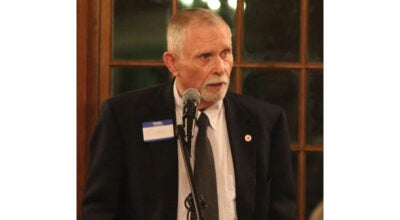Welcome to Anchorage, Alaska
Published 11:50 am Saturday, December 31, 2016
by James D. Howell
Our plane lands a little after 9 p.m. It still looks like the middle of the afternoon to us: the light has a slight softness to it, but is bright enough read a newspaper. No lights are on around the exterior of the airport; street lights are not necessary to drive.
It’s late in the season, but all the hotels that I consider to be safe are full. We find a bed and breakfast hotel across town and check in. It’s on a major intersection east of the downtown area and I think it will be suitable for a few days. Our tired bodies need little convincing.
The next morning, breakfast proves to be a hidden pleasure. The breakfast room serves as an oriental restaurant in the evenings, and this morning we join several others and enjoy a pleasant start to our day.
We head downtown in search of things to do and ways to do them. I have some knowledge of the Anchorage environs, but my supply of current maps is nonexistent. We’ll spend this day downtown and then branch out to the outlying attractions for the next few days. It seems like a good start for the trip.
Anchorage is the largest city in Alaska. It sits at the head of the Turnagain Arm of Cook inlet, and boasts two very busy airports — one for commercial and all international flights and one for local domestic operations. The military also has Elmendorf Air Force Base and a few smaller airfields. It’s a busy airspace. Alaska has the largest number of planes per capita of all the states. It’s obvious if you spend any time here.
The city has fewer than 300,000 residents. Up until the discovery of the enormous Prudhoe Bay oil reserves, the military was the main economic base.
Since then, it has been a mix of military, oil and tourism. Geographically, the downtown is not large; it’s an easy walk from shopping to museums to the Alaskan Railroad terminal.
We park in the lot for the downtown shopping center and hike to the visitor’s center; it’s only a couple of blocks. A rain shower or two is always a risk.
The Visitors Information Center is striking. It’s built in the style of a settler’s cabin, with a green growing turf roof, and gorgeous flower beds and baskets all around. It takes a little time to just walk around and enjoy the stunning, vibrant, colorful beds around the building and along the walkways. My camera is happy; it’s impossible to take a bad picture of the dazzling flowers.
We find the staff helpful and collect a few pamphlets and an essential map. The best one is a commercial map with businesses and points of interest printed on one side and a street and road map on the other. It will be easy to locate our sightseeing paths.
The center is located on Fourth Avenue. In 1964, the other side of that street dropped some 15 feet or more during the most powerful earthquake ever recorded in the United States. The shift in the paved level is readily visible at a glance. The street dead ends at the entry to Earthquake Park. From there to the water, the landmass is silt.
During the quake, all the houses along this shoreline sank into the quicksand-like mire. All the way from here to the airport, houses and commercial buildings fell apart and mostly disappeared into the muck. Today, it’s a popular hiking trail and public use park.
I check out the downtown shops and eclectic sights, meant to attract tourists. They are effective; I am attracted. Talking moose heads join exaggerated human caricatures on the sidewalk. Gold panning and adventure tours are offered. Sightseeing by land and air is popular. This state is, after all, about the outdoors. Bears in T-shirts welcome prospective patrons.
I make a quick stop at the Center for Performing Arts and the Anchorage Museum. There’s a display of northern lights photographs at the Performing Arts Center and the Anchorage Museum offers the best life sized artifacts from the Athabascan culture available anywhere. The museum is new, as museums generally go. It has been vastly expanded and today is a very popular tourist attraction.
If you wish to relive the great earthquake, you can (sorta) in a theater on Fourth Avenue. Don’t expect the building to shake.
We see the sights, do lunch at a downtown cafe., and return to our hotel with a lot of daylight remaining. We examine the brochures and make a preliminary “must see” list.
Much of the plans depend on the weather and that’s forecast to be good for the next few days. Maybe Portage Glacier tomorrow.
JAMES D. “ARCHIE” HOWELL is a Southampton County native and 1955 graduate of Franklin High School. He can be reached at archiepix@kingwoodcable.com.





